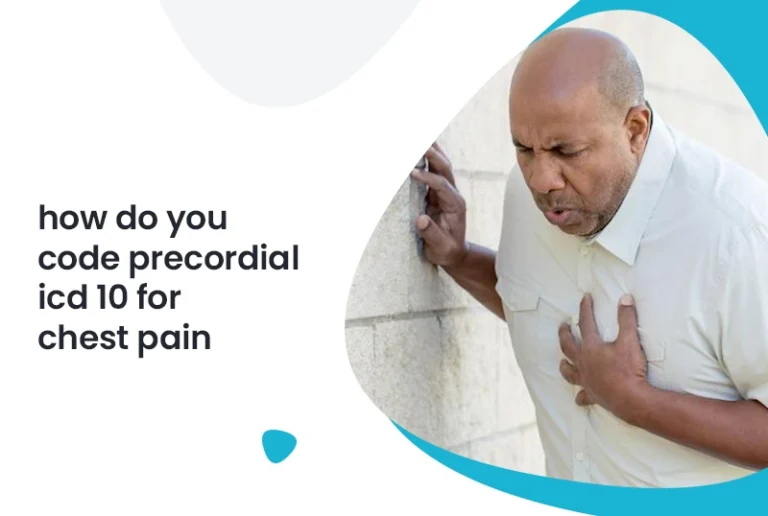Group therapy under CPT Code 97150 offers physical therapists the flexibility to treat multiple patients simultaneously. When you bill for group therapy, understanding pt cpt codes ensures accurate reimbursement. From the outset, therapists rely on specialized platforms such as medical billing services for small practices to verify appropriate code selection. Applying pt cpt codes accurately improves claim acceptance and reduces denials. In this introductory section, you’ll learn how to apply CPT 97150, document group sessions, and navigate payer requirements.
Understanding CPT Code 97150
CPT Code 97150 is defined as “Therapeutic procedures, group, (2 or more individuals), per 15 minutes.” The American Medical Association (AMA) specifies that this code applies when a therapist provides group therapeutic activities to multiple patients. To bill correctly, you must:
- Conduct sessions with two or more patients who have similar functional goals.
- Ensure each patient receives specific, individualized treatment within the group setting.
- Document time increments in 15-minute units.
Adherence to these criteria ensures that pt cpt codes align with AMA guidelines. If sessions run 45 minutes, you would bill CPT 97150 three times (45 ÷ 15 = 3 units). Incorrect unit reporting can trigger denials or audits.
When to Use CPT 97150
Use CPT 97150 when at least two patients participate in the same structured therapeutic activity under direct therapist supervision. Common settings include:
- Outpatient clinics
- Rehabilitation centers
- Skilled nursing facilities
Patients often benefit from peer support, and therapists can address functional mobility, strength, or gait issues more efficiently. Recognizing the proper setting and patient grouping prevents misuse of pt cpt codes and optimizes reimbursement.
Want more information? Read here: The Importance of Pre-Authorization in Medical Billing: Reducing Claim Denials
Documentation Requirements
Proper documentation underlies successful billing of group therapy. Accurate records guard against denials and audit risks. Each patient’s chart must include:
- Assessment and Plan
- Detail functional deficits or therapy goals for each participant.
- Specify how group intervention targets individual needs.
- Detail functional deficits or therapy goals for each participant.
- Session Progress Notes
- Record start and end times to verify 15-minute increments.
- Describe the therapeutic exercise or activity, noting patient engagement levels.
- Compare each patient’s performance to previous sessions for measurable progress.
- Record start and end times to verify 15-minute increments.
- Therapist’s Role
- Explain how the therapist supervised the group.
- Indicate any one-on-one interventions provided during the session.
- Explain how the therapist supervised the group.
By meticulously documenting group interactions, you reduce confusion surrounding pt cpt codes and satisfy payer audits. Remember, generic notes that state “group exercise provided” without specifics may lead to claim rejection.
Billing Guidelines and Best Practices
Accurate billing of pt cpt codes requires familiarity with payer policies. Follow these best practices to improve reimbursement rates:
- Verify Coverage
- Confirm that the patient’s insurance plan covers group therapy under CPT 97150.
- Check for any pre-authorization requirements or session limits.
- Confirm that the patient’s insurance plan covers group therapy under CPT 97150.
- Report Units Appropriately
- Bill in 15-minute increments only if the therapist actively engages with the group.
- Use G-codes or U-codes if mandated by Medicare for certain group modalities.
- Bill in 15-minute increments only if the therapist actively engages with the group.
- Use Modifiers When Needed
- Append modifier GT (via interactive audio-visual telecommunication) if delivering group therapy remotely.
- Include modifier 59 to denote distinct procedural service if combined with other therapy codes during the same visit.
- Append modifier GT (via interactive audio-visual telecommunication) if delivering group therapy remotely.
- Separate Individual and Group Codes
- Do not report CPT 97110 (therapeutic exercise, individual) for the same minutes billed under CPT 97150.
- Ensure no overlap in service reporting to avoid overbilling.
- Do not report CPT 97110 (therapeutic exercise, individual) for the same minutes billed under CPT 97150.
Adhering to these guidelines helps your front-office team maximize accurate revenue capture and minimizes the need for claim resubmissions. Many clinics partner with professional credential services to stay current on payer updates and maintain compliance.
Common Payer Variations
Insurance carriers may differ in their criteria for group therapy:
- Medicare
- Allows group therapy in outpatient settings but limits visits based on functional group composition.
- Requires use of specific functional limitation reporting (G-codes) when billing.
- Allows group therapy in outpatient settings but limits visits based on functional group composition.
- Commercial Insurers
- Some require six or more patients to constitute a valid group (verify per plan).
- May cover group therapy only after individual session limits are exhausted.
- Some require six or more patients to constitute a valid group (verify per plan).
- Medicaid
- State-specific rules govern group therapy coverage and may impose lower reimbursement rates.
Always consult each payer’s policy manual to ensure pt cpt codes align with coverage parameters and avoid unexpected denials.
Common Coding Mistakes and How to Avoid Them
Even experienced billers sometimes misinterpret pt cpt codes guidelines. Common mistakes include:
- Improper Patient Grouping
Billing CPT 97150 for dissimilar patient diagnoses can prompt denials. Ensure group members share similar therapy goals (e.g., all members focus on gait training). - Inadequate Documentation
Vague notes that lack time stamps or fail to connect group activity to individual goals result in non-compliance. Document each participant’s performance and therapist’s intervention clearly. - Overlapping Codes
Reporting CPT 97150 alongside CPT 97110 for the same time period is not permissible. Separate individual versus group therapeutic time to avoid duplication. - Missing Modifiers
Failing to include modifier GT for telehealth group sessions leads to auto-denials. Always append appropriate modifiers based on service delivery mode.
By auditing charts regularly and educating staff on pt cpt codes specifics, providers can reduce claim rejections and improve revenue flow.
Tips for Efficient Reimbursement
Integrate the following strategies to expedite payment cycles:
- Pre-Admission Checks
- Verify group therapy benefits during initial patient intake.
- Inform patients of co-pays or deductibles associated with CPT 97150 services.
- Verify group therapy benefits during initial patient intake.
- Standardized Templates
- Use documentation templates that automatically capture required data elements (time, activities, individual goals).
- Templates reduce variability and speed coder review processes.
- Use documentation templates that automatically capture required data elements (time, activities, individual goals).
- Staff Training
- Conduct quarterly training sessions on updated coding guidelines.
- Encourage collaboration between therapists and coders to clarify ambiguous cases.
- Conduct quarterly training sessions on updated coding guidelines.
- Regular Audits
- Implement monthly audits focusing on 10–15 randomly selected claims.
- Identify patterns of coding errors or documentation gaps and address promptly.
- Implement monthly audits focusing on 10–15 randomly selected claims.
- Leverage Technology
- Invest in electronic health record (EHR) systems with built-in coding alerts for pt cpt codes.
- Automate reminders for pre-authorization requirements to prevent denials.
- Invest in electronic health record (EHR) systems with built-in coding alerts for pt cpt codes.
Incorporating these measures ensures your practice maintains clean claims and minimizes revenue leakage. For comprehensive revenue cycle oversight, many clinics rely on healthcare revenue cycle management platforms to optimize financial performance.
Conclusion
Mastering pt cpt codes for group therapy under CPT 97150 is essential for physical therapy practices striving for efficient billing and maximum reimbursement. From documenting patient progress accurately to understanding payer-specific rules, therapists and billers must collaborate closely. By employing best practices—such as verifying coverage, applying the correct modifiers, and maintaining detailed records—you’ll reduce denials and accelerate payment cycles. As group therapy continues to grow in popularity, staying current on coding updates and leveraging professional resources will ensure sustainable revenue streams and high-quality patient care.
FAQs (Frequently Asked Questions)
1. What differentiates CPT 97150 from individual therapy codes?
CPT 97150 applies exclusively to group sessions with two or more patients, whereas individual therapy codes (e.g., CPT 97110) bill for one-on-one interventions. Group sessions require documentation showing individualized attention within the group format.
2. How many patients must be in a group to bill CPT 97150?
At least two patients with similar functional goals must participate simultaneously. Some payers may require a minimum of six patients; always verify plan-specific criteria.
3. Can I bill CPT 97150 for telehealth group sessions?
Yes. Use modifier GT to indicate a group therapy service delivered via telecommunication technology. Ensure therapy platform meets HIPAA compliance and document the delivery method.
4. Are there time-based requirements for CPT 97150?
Yes. Bill in 15-minute increments only when the therapist actively provides intervention. For example, a 60-minute session is billed as four units (60 ÷ 15 = 4 units).
5. What documentation is necessary to support CPT 97150 claims?
Include each participant’s initial assessment, functional goals, and progress notes detailing time spent, exercise type, patient engagement, and therapist interventions. Avoid generic statements to prevent denials.







